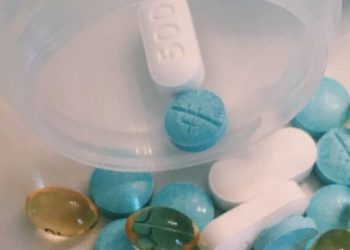Radiant warmth may provide pain control in neonates
1. In addition to commonly used sucrose, non-pharmacologic methods of neonatal pain control such as radiant warmth are being explored.
2. Healthy, term neonates receiving radiant warmth in addition to sucrose, compared to neonates receiving sucrose only, showed fewer autonomic responses and facial features suggestive of pain during a routine immunization procedure.
Evidence Rating Level: 1 (Excellent)
Study Rundown: Growing discussions surrounding neonatal pain have sought to evaluate its possible short and long-term consequences, including whether untreated neonatal pain has neurotoxic effects on the neonate’s developing brain. Sucrose is commonly used with neonates for pain control during minor procedures, along with non-pharmacologic methods, such as breastfeeding or pacifier sucking. In this study, sucrose alone was compared to sucrose plus a radiant warmer. Results indicated that the addition of a radiant warmer decreased healthy term neonates’ autonomic responses suggestive of pain during a routine immunization procedure. As such, usage of radiant warmth may be an effective non-pharmacologic technique for additional neonatal pain control. Limitations of this study include a small sample size subject to type I error and an inability to examine effects of radiant warmth analgesia in preterm and/or ill neonates.
Click to read the study, published today in Pediatrics
Relevant Reading: Consensus Statement for the Prevention and Management of Pain in the Newborn
In-Depth [randomized controlled trial]: Subjects included 29 healthy, full-term neonates undergoing routine hepatitis B immunization. All infants were given sucrose 2 minutes prior to vaccination, while half (48%) were also placed on a radiant warmer throughout the immunization procedure. Monitoring parameters included electrocardiographic (ECG) leads, temperature probes, and videotaping of only the neonate’s face. Responses suggestive of pain included measured autonomic changes (increase in heart rate, decrease in heart rate variability) and physical findings (duration of crying and grimacing). Neonates in the sucrose plus radiant warmth group had significantly lower heart rates and heart rate variability (P < 0.01), duration of cry (2.2 seconds vs 6.9 seconds), and duration of grimace (2.4 seconds vs 7.2 seconds) compared to neonates in the sucrose only group. There was no difference in mean rectal temperatures between groups (P = 0.44).
Image: PD
©2015 2 Minute Medicine, Inc. All rights reserved. No works may be reproduced without expressed written consent from 2 Minute Medicine, Inc. Inquire about licensing here. No article should be construed as medical advice and is not intended as such by the authors or by 2 Minute Medicine, Inc.







